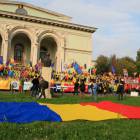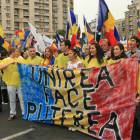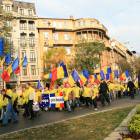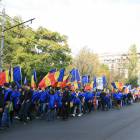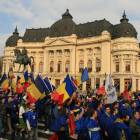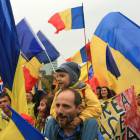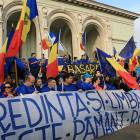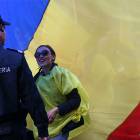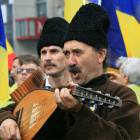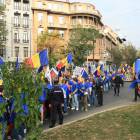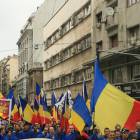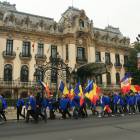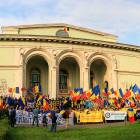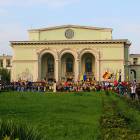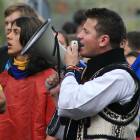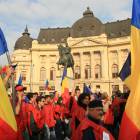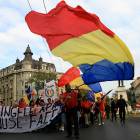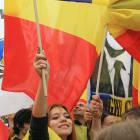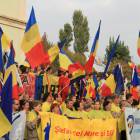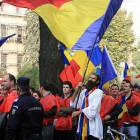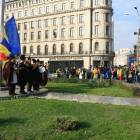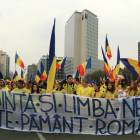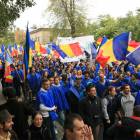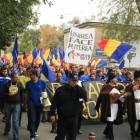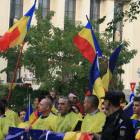Marching for the Reunification of Romania with Moldova
In 1939, a week before the beginning of the second world war, the foreign affairs ministers of Hitler and Stalin (Joachim von Ribbentrop and Vyacheslav Molotov) signed a secret treaty that stated not only the perfect cooperation between communists and nazis, but also divided Europe into spheres of influence. Certain countries, like Poland and Romania were split apart between the two powers and territories occupied under different pretexts.
Moldova is the last land of Europe that is still governed by this secret infamous pact. This now independent state, packed between Romania and Ukraine, is in fact just the eastern part of the historic province of Moldova, inhabited by Romanians, like other historic regions of the country, Transylvania and Wallachia. Though an intense and prolonged process of Russification has been carried on by the Russian Tsar and by the Soviets, the population of East Moldova is still overwhelmingly Romanian, sharing the same language and cultural traditions as the rest of Romania.
After the dismantle of the Soviet Union, Moldova became an independent republic, but has gravitated long time in the sphere of influence of Russia, with former communists in power and with many socialist minded governments also in power in Romania. In recent years, especially after the entrance of Romania into European Union and after the growth of a new generation of young Moldavians educated in Romanian universities, a new popular movement for Reunification has emerged. The movement is supported by some political movements in Moldova and generally ignored by Romanian politicians who don’t see it as a cause that could bring any votes, in the context of a lasting economic crisis.
The young movement for unification has thus organized mainly on Facebook and other internet pages, gathering momentum and hoping to attract attention from the political class. Rallies for unification have been held in Chișinău, where they were greeted with violent reactions from the pro-Russian locals. And now this is the first major march for unification that took place in Bucharest, the capital of Romania.
The participants, though no more than 3.000 people, generally young and many students from Moldova, were welcomed by the citizens of Bucharest and sometimes applauded. For most of the bystanders the march was a total surprise, as the event had not been promoted in media at all in advance.
The march had the musical contribution of a fiddlers band, Ștefan cel Mare, from Moldova and patriotic songs were combined with chants more typical for football fans. The march started in Victory Plaza, in front of the Romanian Government and followed the oldest boulevard in Bucharest, Victory Lane. Passing behind some of the most famous buildings in town, the march ended peacefully in front of the Opera House. The organizers, an NGO named Action 2012 promised that this was only the first initiative of this sort that is meant to raise awareness fr the cause of the national reunification of Romania.
Mai multe despre: Events • Bessarabia • Bucharest • flags • march • Moldova • nationalism • protest • Romania • unification- Home Page
start page - Architecture
landmark buildings - Sacred architecture
places of worship - Nature
landscape photography - Concert
performing artists - Christmas
Santa Claus pictures
- Jooble
jobs for photographers - Escape
an out of control blog - Merry Christmas
The best organizer of Christmas parties - Astro photo
Eclipse hunting and astrological photography


